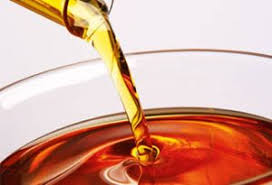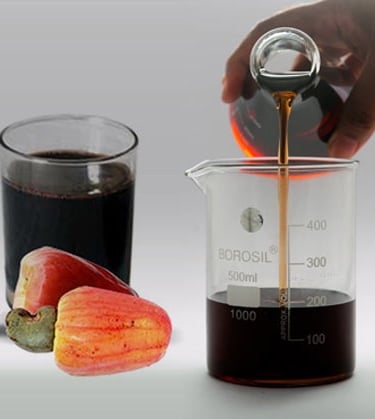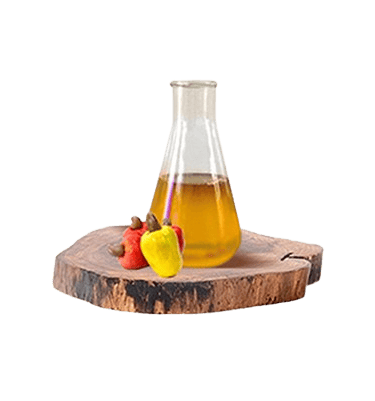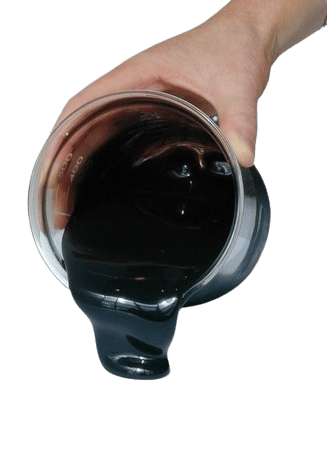KGA Enterprises - CNSL Derivatives, Cardanol, Resins and Other Eco-chemical products
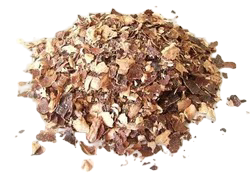

Cashew husk, also known as cashew seed coat or testa, is the thin, reddish-brown outer skin that covers the cashew kernel. It is a byproduct generated during the processing of cashew nuts. While often discarded or underutilized, cashew husk is gaining attention for its nutritional, agricultural, and industrial potential.
Cashew Husk: A Natural Byproduct with Diverse Applications
Utilizing cashew husk promotes a zero-waste approach in the cashew processing industry.
What is Cashew Husk ?
A by-product of the Cashew Industry
Cashew husk also called cashew testa, is the thin, reddish-brown skin that clings tightly to the surface of the cashew kernel. It is not the outer shell (which contains cashew nut shell liquid, CNSL), but the inner protective layer that is removed during kernel peeling.
How Cashew Husk is Derived
Harvesting Cashew Nuts:
Cashew nuts are harvested from the cashew apple. Each nut is enclosed in a hard outer shell containing cashew nut shell liquid (CNSL).
Shelling:
The hard outer shell is removed to extract the cashew kernel. This kernel is still covered with a thin reddish-brown skin known as the husk or testa.
Drying and Roasting:
To make the husk easier to remove, the kernels are often steamed or dried. This loosens the skin without damaging the kernel.
Peeling:
The cashew husk is separated manually or mechanically during the peeling process. This is usually done after the kernel is dried to reduce moisture, which makes the husk brittle and easier to peel off.
Collection:
Once removed, the husk is collected as a byproduct of the peeling process. It is then either disposed of, composted, or processed further depending on its intended use.
Composition & Value of Cashew Husk
Rich in tannins, polyphenols, and fibrous compounds.
Husk Composition
Applications
Natural Dye and Craft Applications
Thanks to its reddish-brown color and high tannin content, cashew husk is used in natural dye production for fabrics, paper, and handicrafts. It offers an eco-friendly option for artists and small-scale industries looking to replace chemical dyes with sustainable alternatives. The dye extracted is also used in ayurvedic and herbal preparations in some regions.
Biofuel and Renewable Energy
Due to its fibrous and carbon-rich composition, cashew husk serves as a valuable biomass fuel. It can be burned directly in industrial boilers or converted into biochar and briquettes for cleaner, renewable energy. These husk-based fuels are particularly useful in rural areas, agro-industries, or decentralized energy setups as a cost-effective and eco-friendly alternative to wood or coal.
Tannin Extraction
Cashew husk contains a significant amount of tannins and polyphenols, which are industrially valuable. These compounds are extracted for use in leather tanning, natural adhesives, dyeing processes, and even corrosion inhibitors.
Eco-Friendly Packaging and Fillers
When processed into pulp or powder, it can be added to biodegradable plastics, compostable trays, and molded packaging items. This innovation supports the movement toward zero-waste packaging solutions in the food and agriculture sectors.
Where Circular Innovation Begins: Cashew Husk
10000 MT
Our Production Capacity
High-quality CNCL derivatives, cardanol, resins, and other essential chemical products.
our Products
+91-991 270 0077
© 2025. KGA Enterprises. All rights reserved.
GSTIN: 06AGMPR7624P2ZI
Regd Office: GTM Colony, Hisar Road, Sirsa - 125055 (Haryana)
Factory: VPO Theri Baba Sawan Singh, Distt. Sirsa - 125060 (Haryana)


Contact
Quick links
sales@kgaenterprises.com
+91-991 280 0077
Cashew Husk

